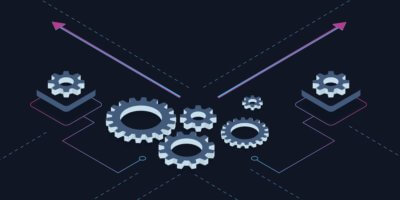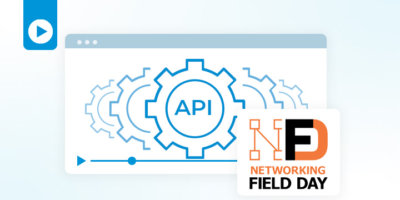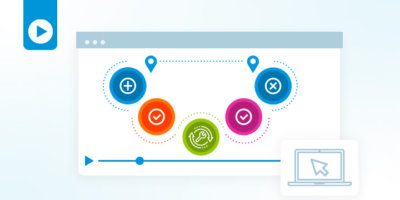At Itential, we have countless conversations with network practitioners who are trying to get their bearings on how to get started automating the network. While they recognize the need for automation there’s still a real struggle to take that first step, even with so many tools and resources available. Network engineers are striving to get to that “Aha!” moment, and in a recent Art of Network Engineering podcast, Itential’s VP of Product Management, Peter Sprygada gives some solid advice to anyone who finds themselves looking to identify the right path for their automation journey.
Here’s my take on that advice.
How to Take the First Step on Your Network Automation Journey
In the podcast, it’s pointed out that “automation is more than just the execution of the change,” and that couldn’t be truer. What most teams don’t realize is that an automation solution should include the ability to not only make the network change, but also provide a series of pre-check tasks to ensure the change can be made safely as well as post-check tasks to ensure the change was made correctly — without impacting existing network services. In addition, automation should also include integration with sources of truth to reduce errors, and even integration with the existing trouble ticketing and chat/notification systems. For anyone just getting started, that’s too much too soon and it’s important to start simple.
Network automation first requires taking a complex problem and breaking it up into simple steps. Every experienced network engineer doing manual network changes does this almost subconsciously. Before you configure a new interface on a network device, you instinctively check to determine if the interface and IP address are already in use because if it’s in use and you proceed with the configuration, it will inevitably cause some unpleasant problems that everyone would rather avoid. Even after a change is made, you don’t simply call it done and log out. Network engineers instinctively go through a series of checks that the changes made are actually working and operating as intended. Instead of thinking of this as a single “stream of consciousness” event, think about how to break up this process into simple steps as automations. In this case — pre-check, make the change, post-check.
From here, you can start with a single step — like making the change. In the podcast, Peter recommends starting small and simple, understanding that there can still be great value gained at each step. For someone just learning to automate, using a tool just to execute a “show” command can be personally valuable. Then you can move to automating the execution of a command to make a change, while still manually providing the pre-check and post-check processes. When you have become comfortable with the mechanism of how the automation tool works and how to make changes, you can take the next step of building a pre-check process and then a post-check process afterwards. With these as guardrails to the change, you’re building confidence in your abilities and trust in the automation.
With repetition, time, and experience, you’ll inevitably get to that “Aha!” moment where your existing knowledge of network engineering becomes easier to translate into the automation tools you are using. Beyond this, you will be able to take further steps along the automation journey, which will include tasks that may not be directly related to networking but are part of the entire process of a change that starts when a change request ticket opens and ends when it closes. Things like integrating your IPAM and inventory systems into automation to reduce errors and save time will become the new challenges to overcome.
Finding Your Aha! Moment with Itential
While there is an entire ecosystem of tools to help network engineers start on the automation journey, we believe that Itential’s approach to network automation makes it much easier for you to get started. If you are just starting out, Itential provides features to quickly translate your existing network expertise into those fundamental automation tasks that you already do manually: pre-checks, execute the change, and post-checks, all without writing any code. For those a bit further along the journey already using automations such Ansible Playbooks or Python scripts, Itential can onboard all of those automations into our platform, where you can continue using them as steps in an automation workflow. Now you can expand that automation and focus on integrating with other IT systems, sources of truth, and other network and cloud systems. You’ll be impressed with how simple it is to extend your automations with these systems by using a library of Pre-Built Integrations or building your own integrations that support your organizations unique ecosystem of systems and services.
In fact, I recently demoed just how easy it is to do all of this to the Art of Network Engineer team. I show how to map existing knowledge in your head of the pre-check to post-check processes network engineers instinctively go through into reusable “Command Templates” that become a critical part of an automation. If you’re a little further down the road and already using automation, I show how to integrate existing scripts and playbooks into an automation, and how to expand it to integrate with other IT systems. Watch the full demo and discussion here if you’re ready to find to that Aha! moment!
At Itential, we are dedicated to meeting you where you are on your automation journey and helping you along the way. You can listen to the full podcast here or go ahead and try things out for yourself for with a free Itential account.






